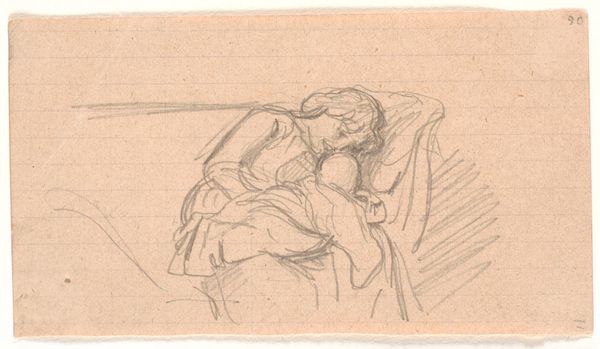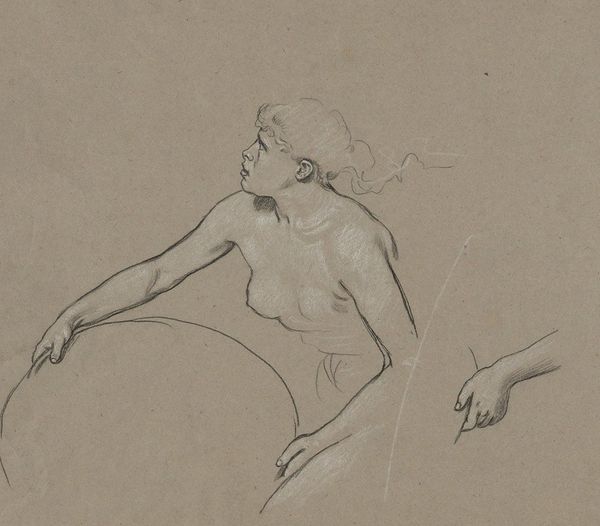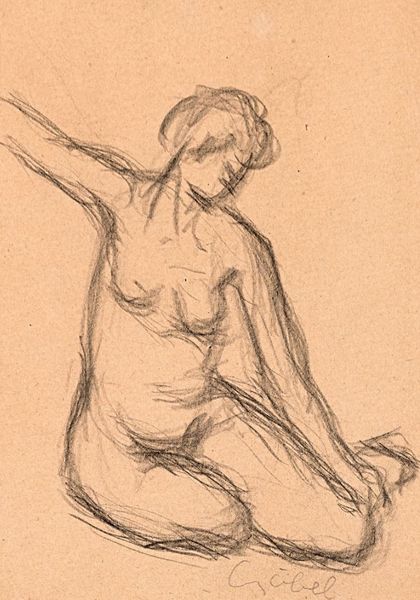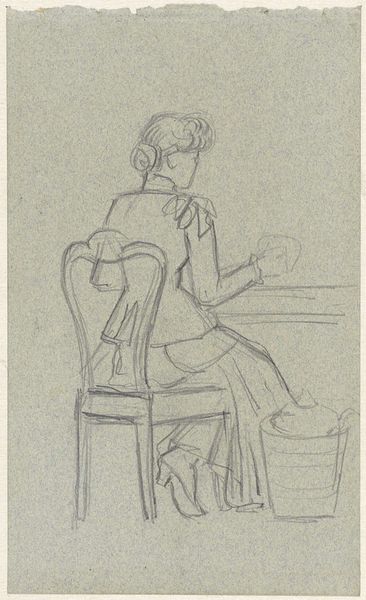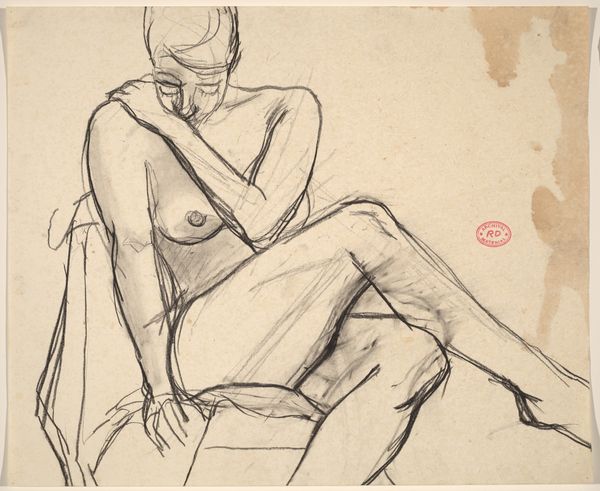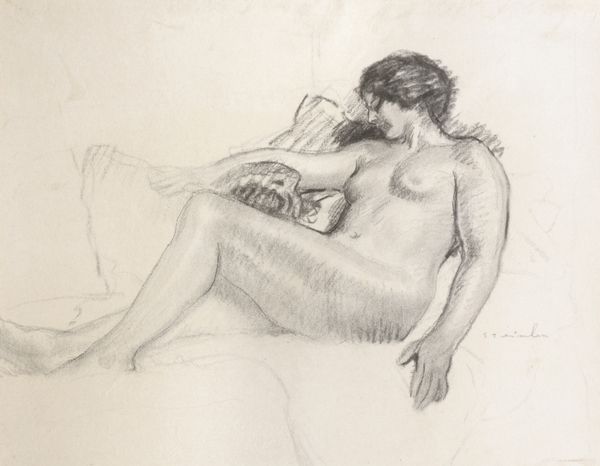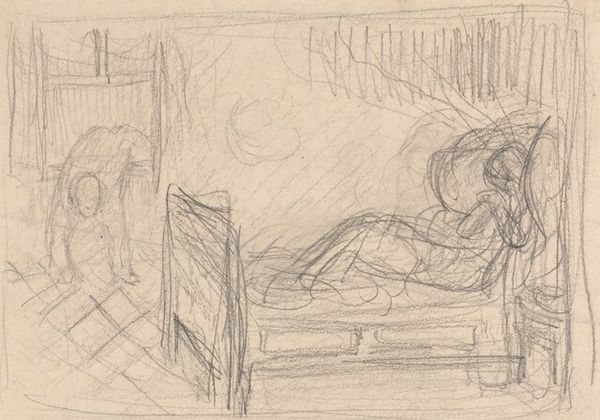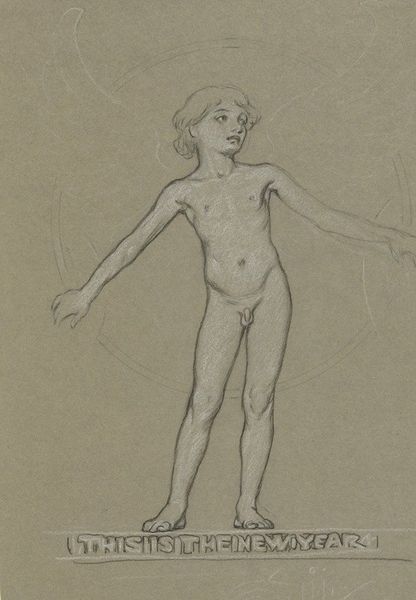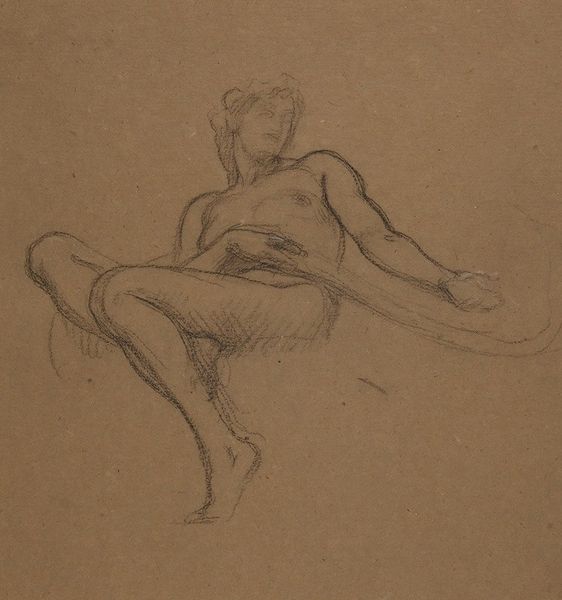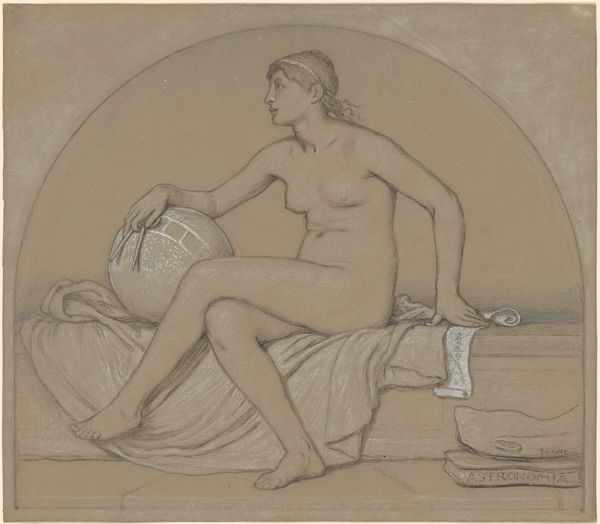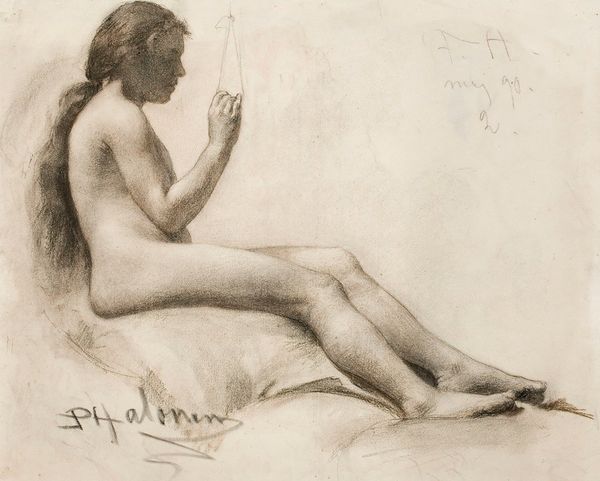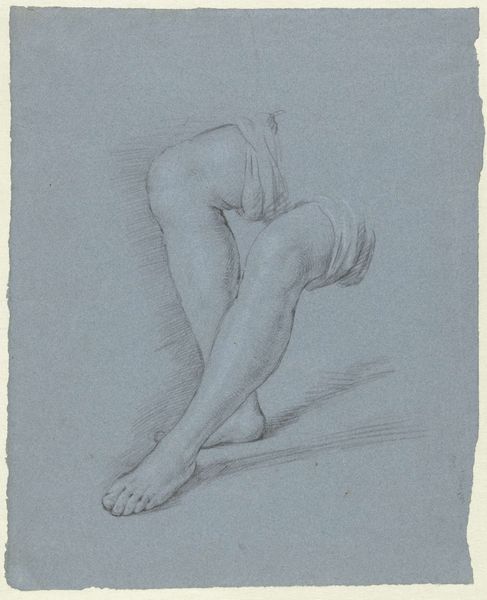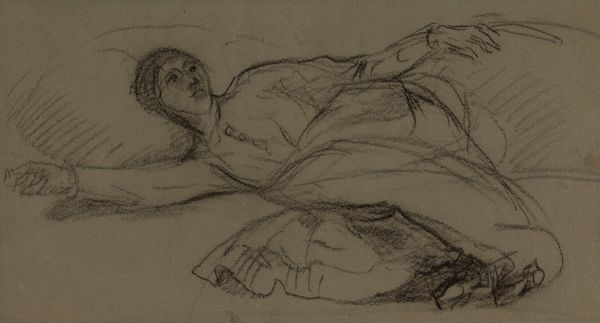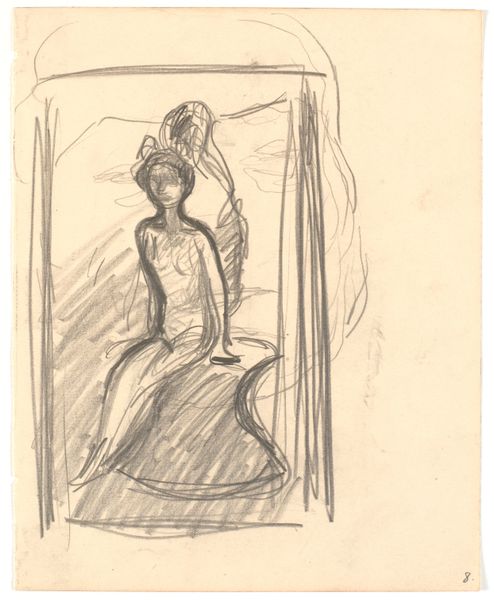
drawing, pencil
#
drawing
#
landscape
#
figuration
#
pencil
#
academic-art
#
nude
#
realism
Copyright: Public Domain: Artvee
Editor: This is Elihu Vedder's "Study for Young Boy Crouching Next to Column," from around 1893. It’s a pencil drawing, quite delicate. The boy and the draped column suggest classical sculpture, but the medium—pencil on paper—makes it feel more immediate, more about process than finished product. What catches your eye here? Curator: What intrigues me is the way the artist highlights the raw process of creating this artwork. The sketch is incomplete. Why? Because Vedder is experimenting with the physical relationships between labor, form, and classical themes. This becomes an almost direct demonstration of production, emphasizing artistic choices and decisions over the seamless illusion we might expect from a finished Academic artwork. Consider also, Editor, how this kind of study might serve as a preliminary design for a painting or a sculpture. What might its intended purpose say about the hierarchy between drawing and, say, sculpture, at the time? Editor: That’s interesting! It's a functional item and a work of art, the physical manifestation of an idea. So, the “craft” of drawing isn't separate from the “high art” it informs; it's essential. Curator: Exactly. Vedder’s study is both an item of labor, and a moment of creativity—are the two mutually exclusive? And what social and artistic conventions are present when a simple material such as pencil and paper attempts to create this grand representation of the body and idealized form? Editor: I see what you mean! I originally thought of it as just a sketch, but understanding the labor behind it—and how it challenges those high art/craft boundaries—definitely gives me a new appreciation for the piece. Curator: It challenges how we might see the value and intent in art, both historically and today.
Comments
No comments
Be the first to comment and join the conversation on the ultimate creative platform.
